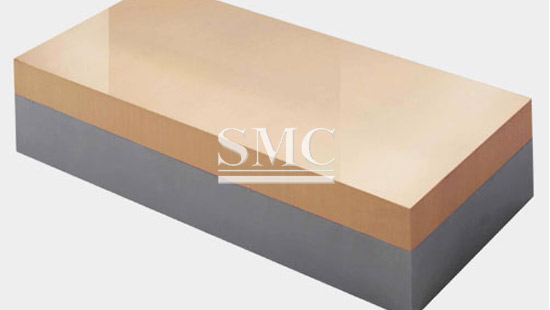Composite steel plate refers to the passage of steel from more than one or more steels. For example, stainless steel composite steel plates are produced by explosion, rolling, or explosive rolling. The stainless steel plate and ordinary steel plates (carbon structural steel, low-alloy high-strength structure) Steel, high-quality carbon structural steel, etc.). It also has the characteristics of two different steel types, not only the corrosion resistance of stainless steel, but also the advantages of low price and good stiffness of ordinary steel. Composite steel plate is used to protect ordinary steel plate from rust. It can be plated, glued and sprayed to cover the surface of the steel plate with a protective “coat” to form a composite steel plate.
Kind
There are many types of composite steel plates, which can be divided into two categories according to their combination types, namely metal composite steel plates and non-metal composite steel plates. Metal composite steel plates are made of other metal coatings on the surface of the steel plates, such as stainless steel composite steel plates, titanium composite steel plates, copper composite steel plates, and aluminum composite steel plates. Non-metal composite steel plate is a composite of base steel plate and viscoelastic resin with excellent vibration damping performance, such as lightweight composite steel plate and vibration damping composite steel plate. Stainless steel clad steel plate and titanium clad steel plate are used to make various storage tanks, pressure vessels, seawater desalination equipment, etc., as substitutes for rare and precious metals titanium and stainless steel, have been widely used in chemical, atomic energy, marine development and other fields requiring corrosion resistance.

Pattern steel is a composite steel in the original form, which is a single steel body without alloying components. It is semi-melted, and it uses the process of lamination, hot forging or hot rolling, cold rolling, and morphological processing to control the internal density and junction of the material. The amount of carbon reaches the fusion of crystals of particles of different sizes inside the steel! Due to the difference in internal density and carbon content, different levels of chemical and mechanical properties are achieved, thereby forming a composite test structure with internal performance differences!
Aluminum composite steel plate is used to make electromagnetic cooking pots and conductive brackets for linear motors, making full use of the good thermal and electrical properties of aluminum and the ferromagnetic properties of steel; aluminum-steel composite plates are also required by household appliances, the automotive industry and the construction industry. Corrosion-resistant renaturation material; the dual-hardness armor plate used by the military industry uses high-hardness steel on the outside and low-hardness steel on the inside. The hard fabric is used to crush the steel core of the armor-piercing projectile. The impact energy of the projectile does not rupture, showing excellent comprehensive mechanical properties; lightweight composite steel plates and vibration-damping steel plates have been widely used in the automotive industry and aircraft industry due to their high specific stiffness and vibration resistance.
Manufacture
There are many methods for manufacturing a composite steel plate. Industrial scale manufacturing methods include casting compounding method, explosive compounding (see metal explosion processing) method, hot rolling compounding method and cold rolling compounding method, hot forging compounding method, stacked forging compounding method, and welding compounding method. Vibration-damping steel plates are classified into constrained and non-constrained types according to the composite form. The constrained type is a layer of resin with a thickness of tens of micrometers to several millimeters injected between two layers of steel plates and rolled into a sandwich steel plate by pressure rollers; the non-constrained type is a layer of viscoelastic material applied on the surface of the steel plate by roll coating.
Guest contributors are welcome at the Alloy Wiki.It is a weekly wiki and guide on alloy information and processing technology, while also about the vast array of opportunities that are present in manufacturing. Our team of writers consists of a Machining Material Supplier / Machinist / Tool and Die Maker, a Biomedical Engineer / Product Development Engineer, a Job Development Coordinator / Adjunct Professor, and a President and CEO of a manufacturing facility.
Link to this article:Features of Composite Steel Plate
Reprint Statement: If there are no special instructions, all articles on this site are original. Please indicate the source for reprinting:Alloy Wiki,thanks!^^


